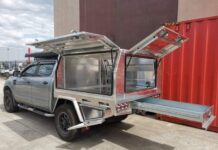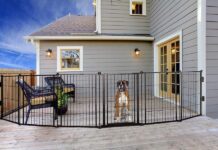Ultraviolet light, or UV light, has repeatedly proven to be effective in killing off bacteria and viral health problems before they end up migrating into contained rooms. In fact, during the recent pandemic, UV light was one of the tools used for reducing viral spread on contact surfaces. HVAC systems today can integrate UV protection, especially through the AC system. This helps families and homes that already struggle with allergy challenges and health sensitivity issues, while also protecting everyone inside from the risk of bacteria, mold and similar.
The Risk of Aerial Transmission
During the cold and warm months, when people tend to stay inside more often, the chance of passing sickness on to other increases. This usually comes in the form of colds, the flu and other conditions that can be transmitted through the air.
Dry air is notorious for allowing easy transmission, which is one of the reasons why a humidifier is often times recommended when someone is sick. Dry air is almost an automatic condition with internal air. During the winter, it happens due to the heating of air to stay warm inside, and during the summer, air conditioners remove moisture to effect cooling in homes. A humidifier injects moisture back into the air, and water droplets literally capture bacteria and virus cells in the air and bring them down with gravity.
However, when the HVAC system is blowing the same air from room to room, aerial health problems can travel very fast and infect others. A key defense to this problem is the integration of UV within the HVAC system to kill off the entry of bacteria and viruses as the air intake brings the air flow through and pushes it out again into various rooms.
A Proven Performance
Repeatedly, UV light has been extremely effective in killing off health-risk contaminants. One of the biggest problems in hospitals has been the invasion of drug-resistant strains of bacteria, which are easily spread through the air and contact. A 2012 study confirmed the use of UV light in providing a very effective defense, practically removing the risk from the hospital entirely (Duke University Medical Center). The reduction rate exceeded 97 percent, an almost unheard of performance in anti-bacterial work, especially in a high traffic environment like that of a hospital.
How UV Works
UV light in an HVAC system can be applied in one of two primary ways: air flow sterilization, which works similar to air filters in an HVAC, and coil sterilization. The former basically neutralizes contaminants in the air as it flows through a UV light chamber. The latter sterilizes air as it comes into the AC intake coils where it is cooled.
The benefits of ultraviolet lights in HVAC system equipment includes:
- Very low cost protection for the benefits provided. UV lights are extremely effective for the cost per bulb.
- UV light works very well against novel bacteria and viral spreads that there are no effective existing defenses for. This was shown with effective UV usage during COVID.
- The system runs constantly, so there’s no need to turn it on or off. As long as the HVAC is running, the UV will protect the internal home air flow going through it.
- Cleaner air for all involved, especially during seasons when colds, flu and similar are spreading quickly through aerial transmission.
- The additional protection uses very little electricity to operate.
Expected Maintenance
UV bulbs do need to be replaced, but the maintenance is generally an annual procedure and can be easily addressed by a service technician. Given their proven track record in hospitals and sensitive lab environments that have to stay protected, UV defenses through an HVAC system makes a lot of sense today.
For more information, visit ApzoMedia



































































